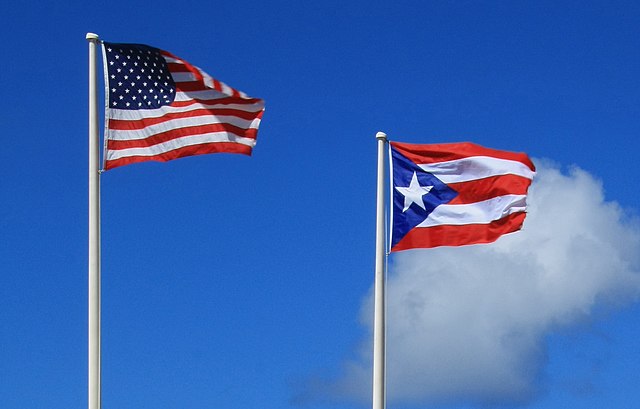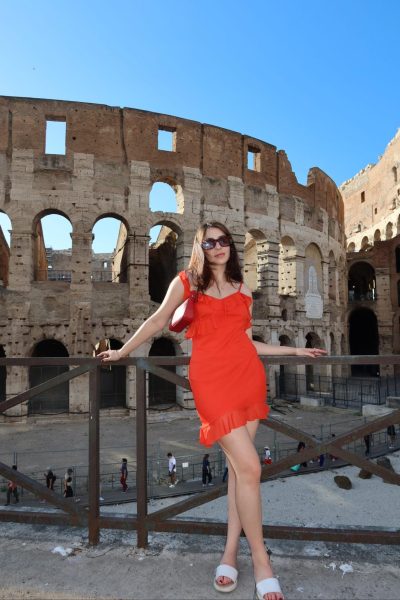While D.C. advocates for statehood, Puerto Rico strives for independence
Photo by Arturo de La Barrera (Courtesy of Wikimedia Commons)
February 23, 2023
The debate over statehood for Washington D.C. and Puerto Rico have been ongoing for decades. While statehood for the District of Columbia is long overdue, many Puerto Ricans believe independence is a much more viable solution for the territory than the establishment of a new state.
Established in 1790, Washington D.C. has been serving as the nation’s capital for 233 years. The Founding Fathers, particularly George Washington, wanted a neutral federal district to serve as the capital of the country. The states of Maryland and Virginia each ceded a portion of land for the cause. As of 2020, D.C. has a larger population than the states of Vermont and Wyoming, with the number reaching over 700,000. These 700,000 residents pay more federal taxes per capita than any state and more federal taxes than 21 states but have no voting representation in Congress. This unfortunate reality alludes to the start of the American Revolution and the very foundation of the United States of America: the issue of taxation without representation. In the Declaration of Independence, written by the Founding Fathers officially declaring independence for the 13 colonies from Great Britain, the Founders mentioned the idea of having the consent of the governed. The phrase “consent of the governed” relates to the belief that a government’s moral authority to utilize state power is only justified and legal when that political power’s target population gives their assent. D.C. residents cannot vote on any federal law that governs them, therefore, there is no consent of the governed.
Although D.C. residents can vote in Presidential elections and have their own local government, Congress can abolish their local government at any time. Along with that, Congress controls the local laws and budget of the district. This issue was very evident during the Jan. 6 insurrection, where thousands of Donald Trump’s supporters raided the Capitol building in outrage over the 2020 election outcome. While a state governor could have activated National Guard forces to put down the unrest in the U.S. Capitol, Washington D.C. Mayor Muriel E. Bowser was unable to do so without consent from the Department of Defense.
While the Founders wanted a neutral district to serve the federal government, they did not anticipate a district with over 700,000 residents. The proposed legislation to make D.C. a state addresses this issue by maintaining the White House, the Capitol, the Supreme Court and other federal buildings as a neutral federal district. The area’s sole purpose and existence would be to house governing apparatus, making it a non-residential area. The people of D.C. deserve representation in Congress just as every other American in the U.S., and statehood will grant them these rights.
While statehood is the best option for D.C. and its residents, independence seems to be the more beneficial choice for the U.S. territory of Puerto Rico. The U.S. seized the island from Spain in 1898 during the Spanish-American War. Puerto Rico’s recognized political position today is as an unincorporated territory, meaning it is neither a U.S. state nor a sovereign nation, despite the fact that it has its own national identity. Puerto Rico is prohibited from many of the legal and financial instruments provided to nations and other sovereign bodies to restructure debts or seek relief due to its political standing. Puerto Ricans cannot vote during Presidential elections, or for Senators or Representatives. Although federal laws apply on the island, the three million Puerto Ricans living there have no say in the making of those laws.
Puerto Rico has been under U.S. rule for over a century, yet the U.S. has failed to provide for the island or its three million residents. After natural disasters, the United States has left Puerto Ricans to fend for themselves and subjected them to decades of abuses, including population-control measures that, beginning in the 1930s, encouraged widespread sterilization of Puerto Rican women and utilized Puerto Ricans in medical research.
In 2017, during Hurricane Maria, the Trump Administration blocked access to over $20 billion in hurricane-relief aid and recovery funding. While Maria was the deadliest hurricane to hit the island since 1899, the death toll estimated to be more than 5,000, the Federal Emergency Management Agency (FEMA) had not shown up, even nine months after the disaster. Puerto Ricans had to rely on one another to rebuild the community. Many people believe that the establishment of a national, independent government could have helped Puerto Ricans and aided them during the months after the hurricane more than the U.S. ever could.
The quest for independence has a long history in Puerto Rico, going back to Spanish colonial times. The idea of independence grew after the hurricane, as Maria was not just a natural disaster. It was a political incident that sparked a historic debate.












